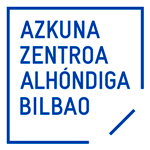
Milán, 1979. PhD in Philosophy and activist in European social movements, his work researches expressive practices and critiques capable of transforming the present, through an ethnographic, pedagogic, and aesthetic reading of the institutional practices of health and art. Trieste has been the focal point of his research since 2015. He collaborates with the Cooperative La Collina de Trieste and forms part of the research collective Entrare Fuori and the Permanent Conference for Mental Health in the World.
Share:
Palimpsesto Basagliano is the result of a historical research process, of collective discussion, as well as the elaboration of critique and the cataloguing of multimedia materials, in which various actors in Trieste as well as Rome participated, through seminars, conversations and interviews that allowed for dialogue between those who have lived this story as a protagonist and those who feel part of it today.
In the first of the six seminars, Palimpsesto Basagliano began from the analysis of the photographic report of Carla Cerati and Gianni Berengo Gardin, Morire di classe (1969), that in its time opened the public debate on the state of the psychiatric institutions in Italy. In second place, the magical and specific narration of Marco Cavallo, the theatrical machine of Giuliano Scabia and Vittorio Basaglia that demolished the fence of the asylum in 1973, allowing us to question how the artistic languages have changed the practice in the attention in mental health.
La Accademia della Follia (1983), founded by Claudio Misculin and Angela Pianca, and the Laboratorio P (1983), founded by Carla Prosdocimo and Pino Rosati, were the centre for two other seminars, one destined to discover theatrical experiences and the other to sketch the pictorial and visual signs that confirmed the polytechnical laboratories as collective instruments of emancipation. Spaces for freedom and a place for multiple possibilities of doing.
The last two seminars tackled the contemporary reality of the right to beauty as a specific practice of other forms of care and artistic expression. The design of the spaces for treatments, curated by Antonio Villas, and the graphics of the communication of the group ZIP, allowed to open common spaces and unprecedented institutional possibilities in the area of mental health. Lastly, the park of San Giovanni, where the asylum had been, and where today, there is a garden with five thousand roses, designed and maintained by the Agricultural Cooperative Monte San Pantaleone. It has been interpreted as a factory of wishes, in which every day the specific signs of the wonder maintain the terrible memory of institutional violence alive.
During the first weeks of my stay, I did nothing but discuss and speak with many of the protagonists of the basagliana in Trieste’s revolution. They were crucial weeks in which closed drawers and abandoned files gave way to voices and images, so that this research would become the protagonist of the present. Having chosen six stories, the goal was to transform the objects and gathered voices, into common spaces for discussion in Trieste. The result was interviews, seminars and conversations taking place in collaboration with a multidisciplinary work group made up by Lara Baracetti, Arturo Cannarozzo, Guillermo Giampietro, Francesca Giglione, Naomi Piani, and Adam Zuliani from the Social Cooperative of La Collina.
These hidden materials, uncovered and superimposed, these mixed languages, recorded and awaken, these prepared discussions, moderated and recorded, are now a catalogue of voices and images, discussions, and critical analysis, gathered on a web site, where one may follow some of the guided paths, or compose one’s own interpretation or situation of one of these stories. During the project, the necessity arose to create an expository device that would contrast the historical reading with the voices and specific images that pierced these stories.
Palimpsesto Basagliano is set out to be a critical mediation that questions the relation between society and institutions. Trieste represented a reference point for the different generations of institutional critique, as it defines the institution as a social story, historical and material, whose incidence is not only disciplinary, but strictly political and above all, subjective. To live this experience in the Spanish Royal Academy in Rome is to accept these matters of the daily life of a live and complex institution and to discover the daily difficulties of a critical institutional practice: two moments that were meaningful to me.
On one side, to accept the challenge to maintain the project in continuous tension with a collective and social story, highlighting the ethical and political prominence of those who practice this story every day. A challenge that was developed through a tight collaboration with the Social Cooperative La Collina. On the other side, it meant the rethinking of the aesthetic and analytical tools right in the middle of a sudden pandemic, a work carried out together with the Chopin Collective, with Carlo Caprioglio and Silvia Ribeca, and Radio Fragola Gorizia. The result of this challenge is another palimpsest of voices, collected in the article “Pandemie Locali”.
